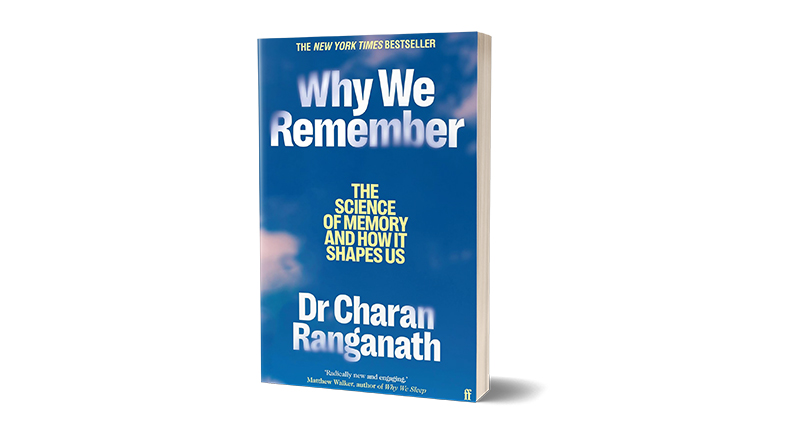There will be blood!
-
- from Shaastra :: vol 02 issue 03 :: May - Jun 2023

That's the promise of researchers and start-ups working on novel ways to transport and store the life-saving fluid to serve blood-poor parts of India.
Ashfaq Ashraf was dismayed when he heard about the death of two women in rural Odisha. The fact that they had died because of lack of access to blood troubled him — and he resolved to do something about transporting blood to remote areas.
Having worked as a vaccine consultant in New Delhi in 2014, Ashraf was well-versed with the cold chain machinery needed for the safe transport of vaccines. But a year later, when he joined the KIIT Bioincubator's Social Innovation Immersion Program, launched in association with the Biotechnology Industry Research Assistance Council (BIRAC), he found that blood banks were not as well-equipped as the vaccine industry when it came to transporting the life-saving fluid from one location to another.
An artificial wall exists between those dealing with blood transport and those moving vaccines, rues Joy Mammen, Professor in the Department of Transfusion Medicine, Christian Medical College (CMC), Vellore. "It is sad that this gap exists despite the availability of technology."
Ashraf, an M.Tech from the Indian Institute of Technology Madras, was determined to address this problem. So, in 2017, even before his fellowship at the Kalinga Institute of Industrial Technology (KIIT) ended, he had started a company called Bagmo to create systems for efficient and safe transport of blood. As a fellow, he piloted its first product — a temperature-monitoring device — in collaboration with CMC Vellore. Called LoggFi, it is used to monitor blood temperature while in storage and transport, and sends out signals if there is a temperature fluctuation.
This led to the development of a more specialised product called Blood Monitor, an RFID-enabled tag attached to individual blood bags, which is capable of monitoring blood temperature in storage and transit, and storing information on blood parameters such as blood types, test results and the real-time location of the blood bag.
Some start-ups make it easier for people to donate blood and provide information on where blood is available for those in need.
LoggFi, Blood Monitor, and a third Bagmo product, iCMMS (Intelligent Computerized Maintenance Management System), together allow for vein-to-vein tracking of blood (from donor to recipient), temperature tracking, digital access to blood quality data and ease of stock management. The products increase the usability of blood and transparency in transportation, says Bagmo Co-Founder Anas D.
Since its first pilots at CMC, the start-up has expanded its footprint in government and private hospitals in Kerala.
The need for efficient blood transportation underlines the demand for a 'hub-and-spoke model' of blood banks. In this system, some central units collect and store blood, and then transport it to far-off centres that can store blood but do not collect it. This model of blood collection and transport is common to many countries.
The number of blood banks has been growing in India: today, there are more than 3,000 of them, considerably more than in many other countries. A 2021 study (bit.ly/blood-banks-india) noted that that there were over 2,600 blood banks in India in 2016 – against 452 'blood-collecting centres' in China, 600 in the U.S. and 375 in Indonesia. These centres collect blood, test and process it, and transport it safely to wherever it is needed.
Even so, India is blood-poor. A 2022 study (bit.ly/blood-demand-supply) in PloS One by researchers from CMC Vellore recorded that there is a demand and supply gap of 2.5 donations per 1,000 eligible persons. The overall clinical demand for blood in India is estimated to be 14.6 million whole blood units, amounting to 36.3 donations per 1,000 people. About 93% of this requirement is met, amounting to 33.8 donations per 1,000 persons. The study also noted that the demand for blood in India is likely to increase in the future. Additionally, there's a high rural-urban divide in the distribution of blood banks, and the State-wise distribution is also uneven.
STATUS OF DRUG
In 2000, the government introduced a systemic change in the process of blood banking in India. Before that year, direct donation of blood from donor to recipient was allowed. However, to stop the transmission of HIV, malaria and other transmissible diseases, the government banned this practice. Blood was given the status of a drug, and a recipient could only procure it from a blood bank, where it had been tested and its quality ascertained.
While the practice has greatly helped in increasing the safety of blood transfusions, it has also meant that for patients living away from blood banks, accessibility to blood has become difficult. So much so that three years ago, the Association of Rural Surgeons of India filed a petition in the Supreme Court, asking for direct donations to be reinstated. It pointed out that despite two decades of mandatory banking, India had still not been able to solve the problem of blood availability.
Apart from poor distribution mechanisms for collected blood, there is another reason for this shortage: the lack of voluntary donations. Blood banks depend on voluntary donations and there are often not enough donors.

Some start-ups, such as Simply Blood and Khoon, address this aspect by making it easier for people to donate blood and providing information on where blood is available for those in need. Simply Blood founder Kiran Verma is currently on a 21,000-km walk to raise awareness for blood donations and to encourage people to donate blood more frequently.
Voluntary donors are the "best" kind of blood donors, Mammen says. They don't say who the blood should be used for and are often more truthful and honest in divulging clinical information asked during the screening process.
PROLONGING SHELF LIFE
Alongside efforts to improve the supply and storage conditions of blood, some researchers are also working to prolong the shelf life of blood. After blood is collected from a donor, it is tested to ascertain its quality and then split into its constituents: Red Blood Cells (RBC), platelets, and plasma. Each component holds relevance for different kinds of patients. Each of these constituents has a different shelf life: platelets can be stored for about five days; RBCs for 45 days or so; and plasma for about one year.

RBCs, however, start degrading after 20-22 days because of the production of DAMPs (damage-associated molecular patterns) inside the blood bags. These DAMPs are nothing but free iron, free haemoglobin, extracellular DNA, proteins, and so on. They start interacting with each other and damage the RBCs. Getting rid of DAMPs can prolong the life of RBCs, but it has been a difficult quest for researchers so far.
Alongside efforts to improve the supply and storage conditions of blood, some researchers are working to prolong the shelf life of blood.
In December 2022, Praveen Vemula, a researcher at the Institute for Stem Cell Science and Regenerative Medicine, Bengaluru, and his colleagues came up with a way to target DAMPs in the form of specialised nanofibrous sheets that could absorb DAMPs without damaging the RBCs, and shielding them from the damage that may be caused by DAMPs. In laboratory tests, the nanofibre sheets have shown good results: 40-day-old blood is like its freshly collected counterpart.
Though that process is still in the early stages of development, Vemula is engaging with blood banks to figure out how best to bring the product to the market. He is looking at whether it would be better to design blood bags with his material or if it would make more sense to pass the blood through the nanofibre sheet around the 20-day mark. Once the designs are decided on, clinical trials will be run. The team is also working on solutions to extend the shelf life of platelets, Vemula says.
While Khoon, Simply Blood and other such start-ups address the supply-side challenges that blood banks face, solutions such as those offered by Bagmo or being developed at Vemula's lab address storage and transit-related problems of blood banks.
Eventually, both types of solutions can help increase the availability of safe blood in India and improve access to this critical life-saver.
Have a
story idea?
Tell us.
Do you have a recent research paper or an idea for a science/technology-themed article that you'd like to tell us about?
GET IN TOUCH














